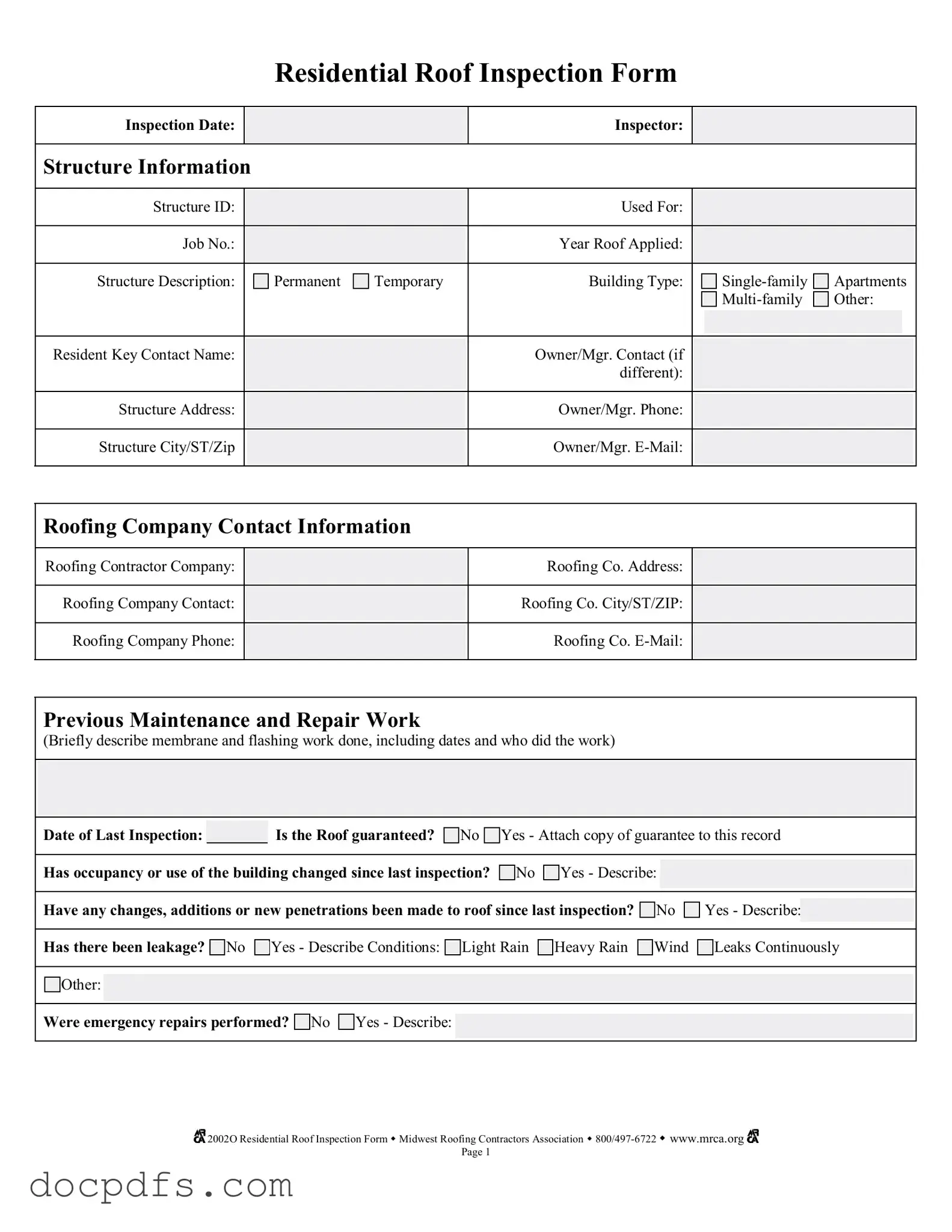The Roof Inspection Form is designed to help assess the condition of a roof. It provides a structured way to document the findings of a roof inspection, including any issues that may need attention. By using this form, inspectors can ensure that all relevant details are captured, which helps in planning maintenance or repairs.
The Roof Inspection Form should be filled out by a qualified roofing inspector or contractor. This person should have experience in evaluating roofs and understanding the common issues that can arise. It’s important that the inspector is familiar with the specific roofing materials and construction methods used on the building being inspected.
The form requires several key pieces of information, including:
-
Inspection date and inspector's name
-
Structure information such as ID, type, and address
-
Contact information for the owner or manager
-
Details about previous maintenance and repairs
-
Current condition of the roof and any issues observed
Completing all sections thoroughly helps create a comprehensive record of the roof's condition.
What should I do if the roof has leaks?
If leaks are present, it is crucial to document the conditions under which they occur. The form provides sections to describe the type of leaks, such as those caused by heavy rain or wind. After identifying the leaks, immediate action may be necessary, especially if the roof's condition is rated as "Poor." It is advisable to contact a roofing contractor for repairs as soon as possible.
Regular inspections are important for maintaining the health of a roof. It is recommended to complete the Roof Inspection Form at least once a year. However, additional inspections may be needed after severe weather events or if there are signs of damage. Keeping a consistent inspection schedule helps catch problems early before they lead to costly repairs.
What does the condition rating system mean?
The condition rating system uses three categories: Good (G), Fair (F), and Poor (P). A rating of "Good" means no action is needed. "Fair" indicates that monitoring is required, while "Poor" signals that immediate action is necessary. This system helps prioritize repairs and maintenance based on the urgency of the roof's condition.
If the roof is guaranteed, attaching a copy of the guarantee to the form is essential. This documentation can be helpful for future reference, especially when addressing any issues that may arise under the terms of the guarantee. It also provides evidence of the roof's warranty status, which can be beneficial for both the owner and the contractor.
After completing the Roof Inspection Form, it is important to keep a copy for your records. This form should be stored with the roof's historical record. Having a detailed history of inspections, maintenance, and repairs can be invaluable for future assessments and for any potential disputes regarding the roof's condition.
